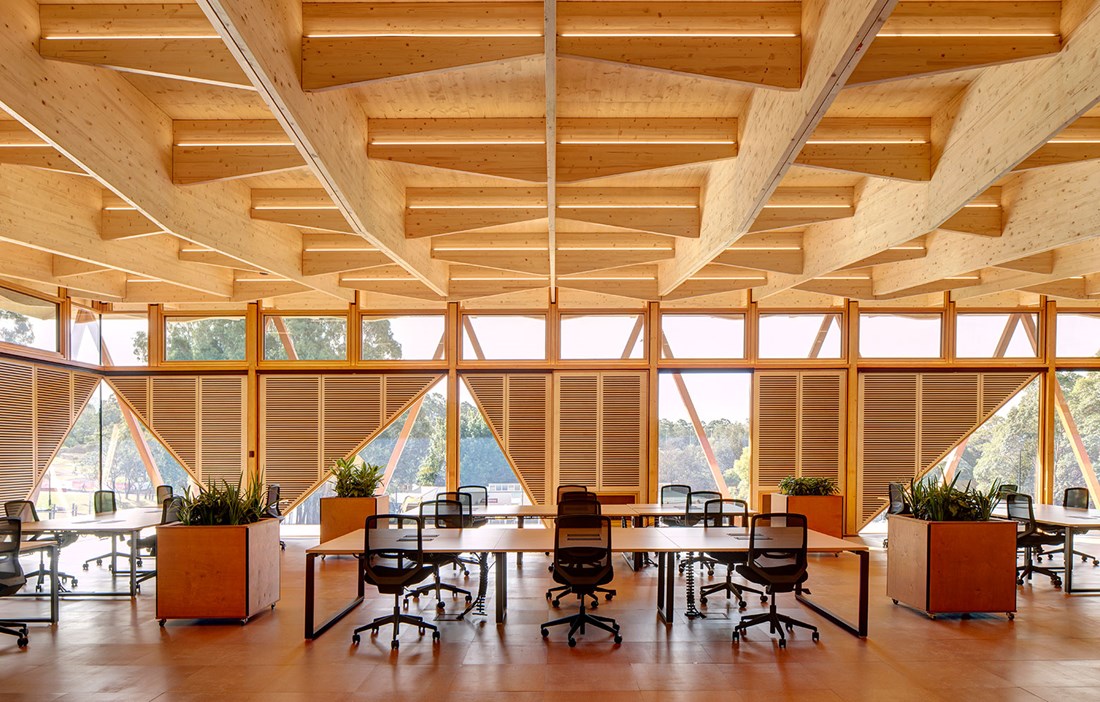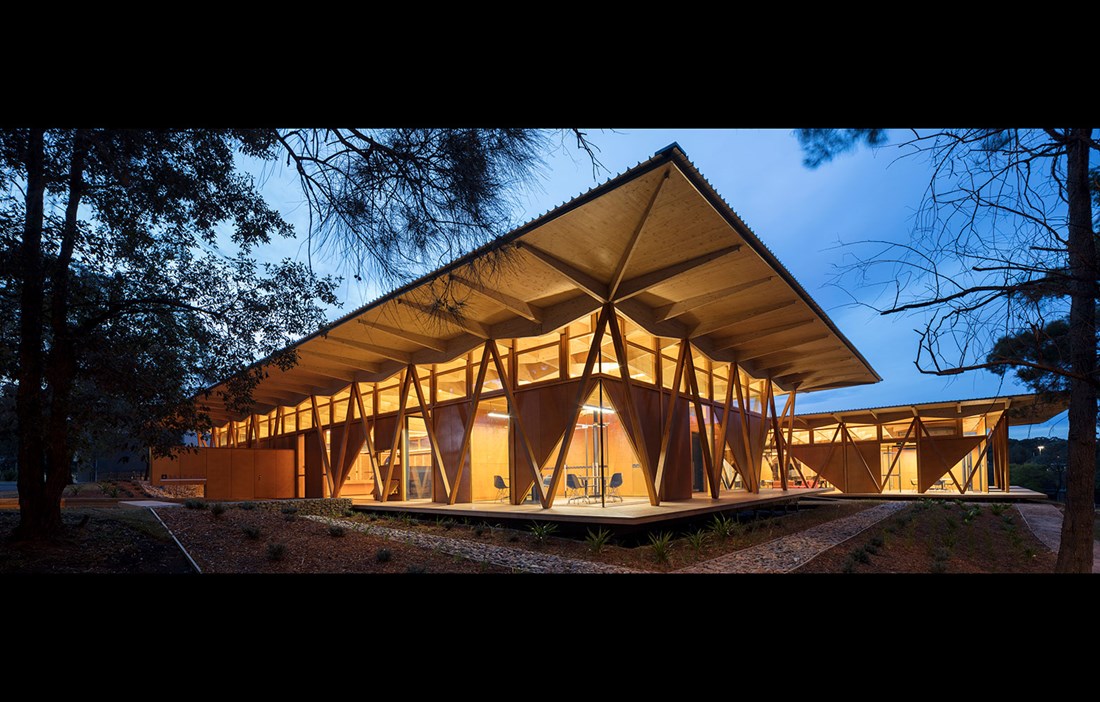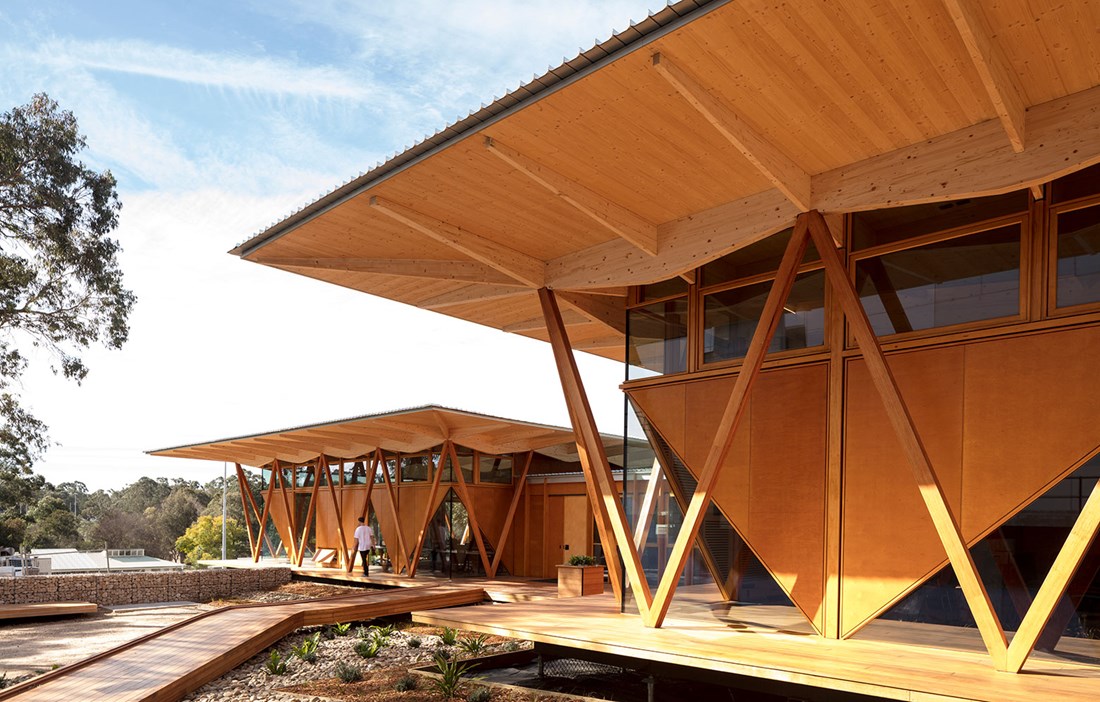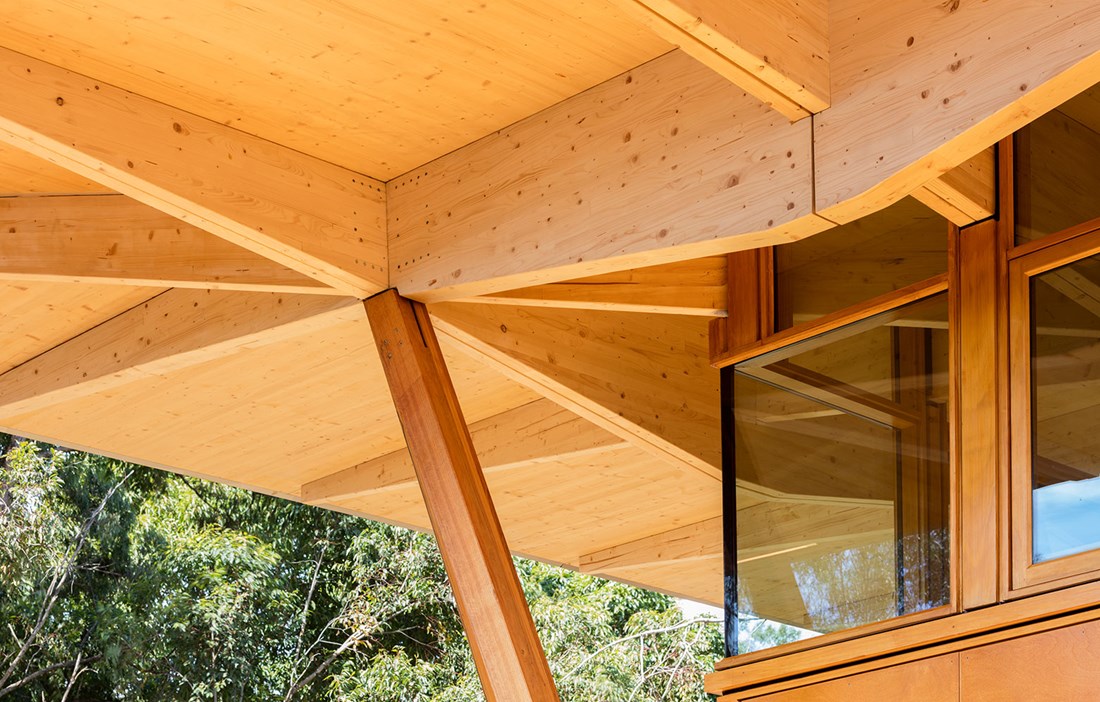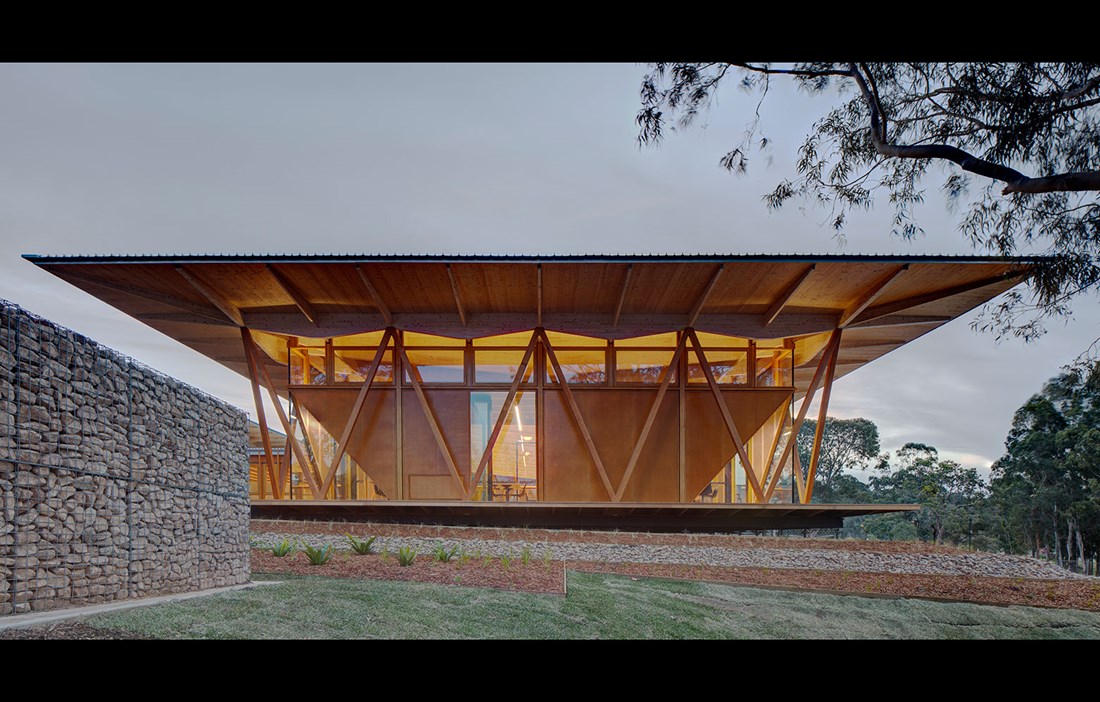All is quiet in the Australian night. A gentle breeze moves across the bush on the edge of the university campus in north-west Sydney. Suddenly a distant rumbling begins to get louder and beams of light appear over the hills. The caravan of trucks carrying the large structural components – 3 x 18 metres – have arrived at the construction site.
“It was quite something. Lots of us gathered on site that night: architects, contractors and carpenters. The Incubator was a unique project that forced us to create unique solutions. That meant that everyone felt personally engaged with the project and wanted to see the arrival and assembly of the wood panels up close,” says Luke Johnson, chief architect at Architectus.
The trucks continued to deliver wood panels for the building’s roof long into the night, after which the construction workers took up the pace. The following two nights saw thousands of square metres of prefabricated panels put together, and the whole building was completed in five months.
A short build was an essential part of the brief that Macquarie University gave to design studio Architectus. Ranked among the very best in the world, the university is in the middle of a massive expansion, which is involving an investment of over SEK 6 billion in new technology and infrastructure. One of its top priorities was an incubator – a centre for start-ups where ideas and knowledge from students, innovators and local companies could be turned into businesses. The initial idea was to build a more permanent incubator in five years’ time, and the one designed by Architectus would be taken down, moved and put to new use. It was therefore important that the building was adaptable – both in terms of portability and the flexibility that a modern incubator demands.
“We wanted a simple and elegant building with large open spaces, high ceilings and impressive roof spans. We chose a CLT structure because it can be quickly assembled and disassembled, and it can handle significant stresses,” says Luke Johnson.
The spruce CLT comes from Austria. When the building was planned two years ago, the architects were unable to source locally manufactured CLT, but things have quickly changed in Australia. After several years of lagging behind Europe and the USA, CLT is now being used in increasingly extensive and more complex multi-storey projects, and the number of manufacturers of prefabricated wood products in the country has grown accordingly.
The whole of the Incubator uses a harmonious palette of materials comprising several different types and grades of wood. This helps to create the warm, light inviting feel that Architectus wanted. The Incubator is intended to be a pleasant and inspiring place that people want to return to. However, using several different types and grades of prefabricated wood also posed challenges for the architects.
“When you have so many different parts that have to fit together, in different grades, it’s important that you have big enough tolerances. Factors such as relative humidity mean that different wood products behave in different ways. On a couple of occasions, we had to get a big sledge hammer and carefully knock some of the panels into place. On the next project, we’re going to add a few millimetres to the tolerances.”
41 pairs of glulam posts made from Australian ash run all the way around the building. The external walls are made from plywood, and the interior walls are acoustic plywood panels with a veneer of Australian pine. The ceiling is lined with long, gently wave-shaped, glulam beams that taper at the ends. The architects wanted the ceiling to expose and express the building’s structural forces. The beams are curved because in different places they require more or less structural height to carry the weight of the roof.
“We could have just gone with straight beams, but we wanted to use them to make something beautiful. They also give the building a lightness as they narrow down almost to a point under the eaves. In order to maintain the straight, simple lines along the edge of the roof and further accentuate this feeling of lightness, we haven’t installed any gutters. The roof is a little like a Japanese pavilion.”
The neat, projecting roof casts shade across the windows in the middle of the day, when the sun is at its strongest. But it also protects the outer walls from rain, giving the building a longer service life. The roof is clad in sheet-metal, and when it rains the water runs out over the edge of the roof and down into an irrigation system that distributes the water to the surrounding land. The building was planned to have as little impact as possible on the stunning landscape at the edge of the university campus. No trees were cut down, and the new flora planted was of the same type as the indigenous plants that were already there. The building’s large expanses of glass provide constant contact with nature, which contributes to the inspiring feeling that Architectus was keen to create in the Incubator. The building’s extensive use of wood, much of which was grown locally, also establishes a dialogue with nature.
The fact that the building had to be demountable meant that it couldn’t stand on a concrete plinth. Instead, a glulam platform is held up by steel piles. This solution posed something of a challenge, but Architectus turned it into a positive.
“Concrete foundations can give a building stability, for example. But using a wooden platform instead provides many benefits compared with concrete. We were able, for instance, to run the ventilation and electricity cables under the floor and keep the interior completely clear,” states Luke Johnson.
The building has won several awards in various categories, from general architectural prizes to best educational building. It has also been praised for its sustainability, with solar panels on the roof meeting 60 percent of the building’s electricity needs.
The ability to disassemble the building and use the wooden modules for something else also gives the Incubator a long service life. Ironically, however, Architectus’s hard work on creating an attractive, user-friendly and above all movable building has led the university to scrap its plans to build a permanent incubator.
“They were so pleased with the project that they decided to keep our building. There will be no move. The Incubator is going to stay put on the university campus instead. We are, of course, extremely pleased and proud about their decision,” says Luke Johnson.
Text Erik Bredhe

